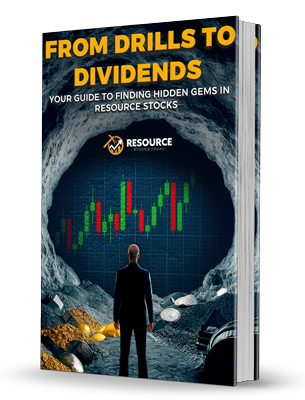Rising Mining Costs and Record Gold Demand Shape Investment Landscape
Overview of the Current Gold Market
The dynamics within the gold mining industry are becoming increasingly complex, characterized by record-high demand alongside sharply rising operational costs. John Ciampaglia, CEO of Sprott Asset Management, recently articulated these trends, emphasizing the pressure on miners as they strive to maintain profitability amidst a challenging economic landscape. With gold prices hovering near all-time highs at approximately $2,735 per ounce, the reality for major producers like Newmont Corporation—world’s largest gold miner—underlines a troubling pattern, as operational costs have surged more than 50% since 2020.
The Cost Challenge Facing Gold Producers
In a candid interview with Kitco Mining, Ciampaglia highlighted the enormous cost inflation that has gripped the industry, stating, “When one of the world’s biggest gold miners signals that their cost inflation is still an ongoing issue, and there’s that margin compression, you’re just not getting that operating leverage you’re trying to achieve.” Newmont’s recent earnings report illustrates this concern, with its share price plummeting 15% in response to disheartening financial results reflecting these spiraling costs.
Overall-in-sustaining costs (AISC) for gold mining operations have seen an alarming rise, particularly as the prices of labor, energy, and essential materials escalate. As Ciampaglia pointed out, this environment is not solely dictated by the buoyancy of commodity prices; it entails a fundamental struggle to sustain profits when operational costs outpace revenue increases.
Surge in Gold Demand Driven by Central Banks
On the demand side, the gold market has witnessed a formidable surge exceeding 30% year-to-date, driven primarily by strategic buying from central banks. According to the World Gold Council’s Q3 2024 Gold Demand Trends report, total global demand saw a 5% quarter-on-quarter increase, breaking new ground with a valuation exceeding $100 billion. Central banks, particularly from BRICS nations—Brazil, Russia, India, China, and South Africa—have played a pivotal role in this surge.
Ciampaglia remarked, “Central banks are less sensitive to the price. They have very specific goals around accumulation of gold.” This shift towards gold accumulation is largely fueled by geopolitical considerations, with many nations opting to diversify their reserves away from the U.S. dollar. He noted that countries like China and Russia are significantly increasing their gold reserves as a strategy to mitigate risks tied to dollar volatility.
Reflection on Changing Global Financial Dynamics
The World Gold Council’s report further corroborates this unprecedented trend in central bank purchases, with 694 tonnes of gold bought so far this year. Ciampaglia indicates that this robust demand reflects a broader transformation in global finance, underscoring gold’s unique position as a stable asset that offers resilience, especially in turbulent economic times.
“The sustained buying from central banks, even at high prices, is about achieving long-term stability, not short-term gains,” he added, reinforcing the notion that gold represents a critical bulwark against the fragility of fiat currencies.
Potential Regulatory Changes and Market Implications
Looking ahead, political variables in the U.S. could significantly influence the mining sector. Ciampaglia suggested that the outcome of the upcoming U.S. election might catalyze changes in mining regulations, presenting two diverging futures: “If [Kamala] Harris wins, we may see stricter environmental standards, likely raising costs for domestic miners. If [Donald] Trump wins, we could see a shift toward resource independence, easing some regulatory pressures and possibly spurring investment in U.S.-based projects.”
Furthermore, the Canadian mining landscape stands poised to gain from this renewed focus on critical minerals. Ciampaglia pointed to Canada’s stable jurisdiction and adherence to responsible mining practices as critical factors making it an attractive source for essential resources like lithium, copper, and others crucial for modern infrastructure and energy transition.
Conclusion: An Evolving Investment Landscape
In conclusion, the intersection of rising mining costs and unprecedented gold demand is reshaping the investment landscape for resource-driven stocks. For serious investors, understanding these market dynamics becomes essential for identifying opportunities amid the prevailing challenges. The ongoing geopolitical shifts, coupled with evolving regulatory environments, will likely dictate the strategic positioning of miners and influence their profitability in the years to come.
As the gold market navigates these complexities, late-stage investors must keep a close watch on these trends to leverage their potential within this challenging yet promising sector.















